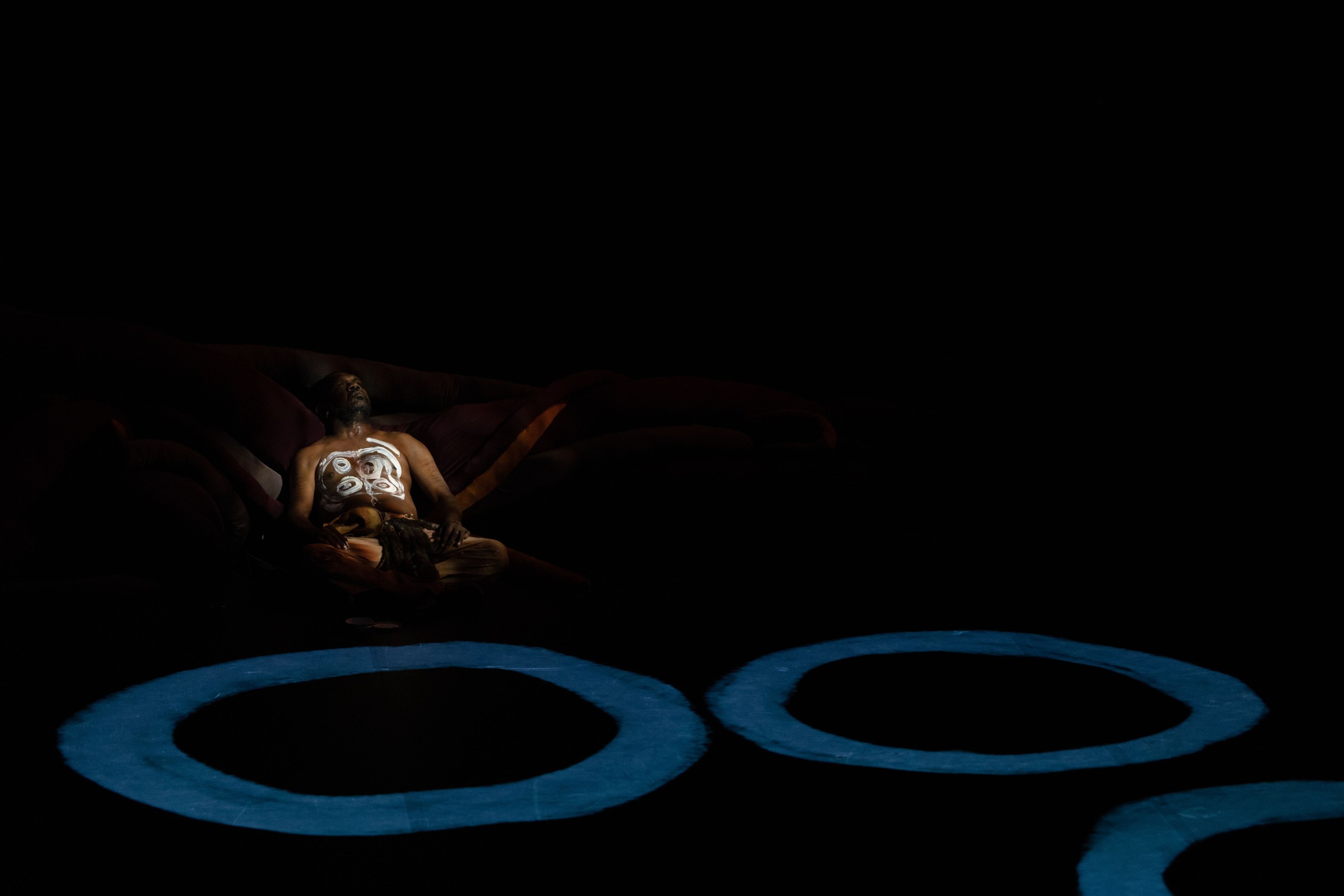You go to see Marrugeku dance for difference. It may be the marvellous co-artistic director Dalisa Pigram dancing by her Yawuru self on stage. Or it may be an increasingly diverse Oceanic inter-cultural investigation that this time crosses yet more of the Pacific to reach The Philippines with just a hint of Malaysia.
But always Dancing Forward – as the title of this show, ‘Burrbgaja Yalirra 2’ translates. Starting at Carriageworks, where they are the epitome of a resident company, but travelling on to Perth and Noumea.
Not that the words accompanying the three parts of the show necessarily match up to the dramas created on stage. I fear I missed the “summoning of Bakunawa, the serpent-like dragon who swallowed the moon” in Bhenji Ra’s work ‘No New Gods’. And the trauma of blackbirding and slavery in the sugarcane fields somehow seemed underplayed in ‘Bloodlines’, a charming two-hander featuring Erub/Meriam man Ses Bero with Ambrin Kanaky Stan Nalo. And Emmanuel James Brown (EJB)’s tribute to his great-grandmother, Nyuju Stumpy Brown could, for me, have involved far more of the great artist’s work projected on to the dancefloor than we got to match the intention of telling us of her migration from a spiritual desert to the Fitzroy Crossing of her working life.
But each work held the attention – especially the he/she creature conjured by Bhenji Ra in moody darkness, involving Filippino fighting sticks, a water buffalo that dies with a gush of black blood, poetry, ecstatic dancing and a masculine energy that’s constantly undercut by the dramatic use of a feminine mass of hair.
Filippina Corin Ileto’s electronic music proved a perfect match for the intensity of the dance. And her work continued through the other works. Interestingly, though, in ‘Bloodlines’, the music lead the dance; while in the Stumpy Brown work, EJB’s movements seemed to conjure the music to change direction.
But the accumulation of information about the Walmajarri/Wangkajungka exodus from places like Well 33 on the Canning Stock Route, via work on cattle stations like Christmas Creek – EJB offers a brief, witty day in the life of a stockman – to a life in the central Kimberley imbued by memories of desert life carried us on. But those memories could only be satisfied by painting the sand dunes and waterholes of the past, all of which helped to reclaim that Country through the famous Ngurrara Canvas – which was itself danced. Intriguingly, EJB seemed to offer this progress in reverse – beginning comfortably in Fitzroy with Stumpy’s art and ending painted up, dancing ceremonially and heading off fully resolved with spears.
Bero and Nato occasionally brought their own music with them on their migrations – a slapping Pacifika dance here, warlike drums there, a song that required an island-hopping canoe dance. Most memorable was their relationship with soft-sculpture trees that hung at the back of the set. When they fell, the men reverently straightened them out. But where did that train come from?
It was a laid-back interlude between the two stronger pieces – stronger in the sense that behind the dance, a story-line was somewhere pricking the imagination, only just out of sight. As the promo puts it, “Together (and there were 14 on stage for the opening night bows) they make intangible knowledges visible”.



